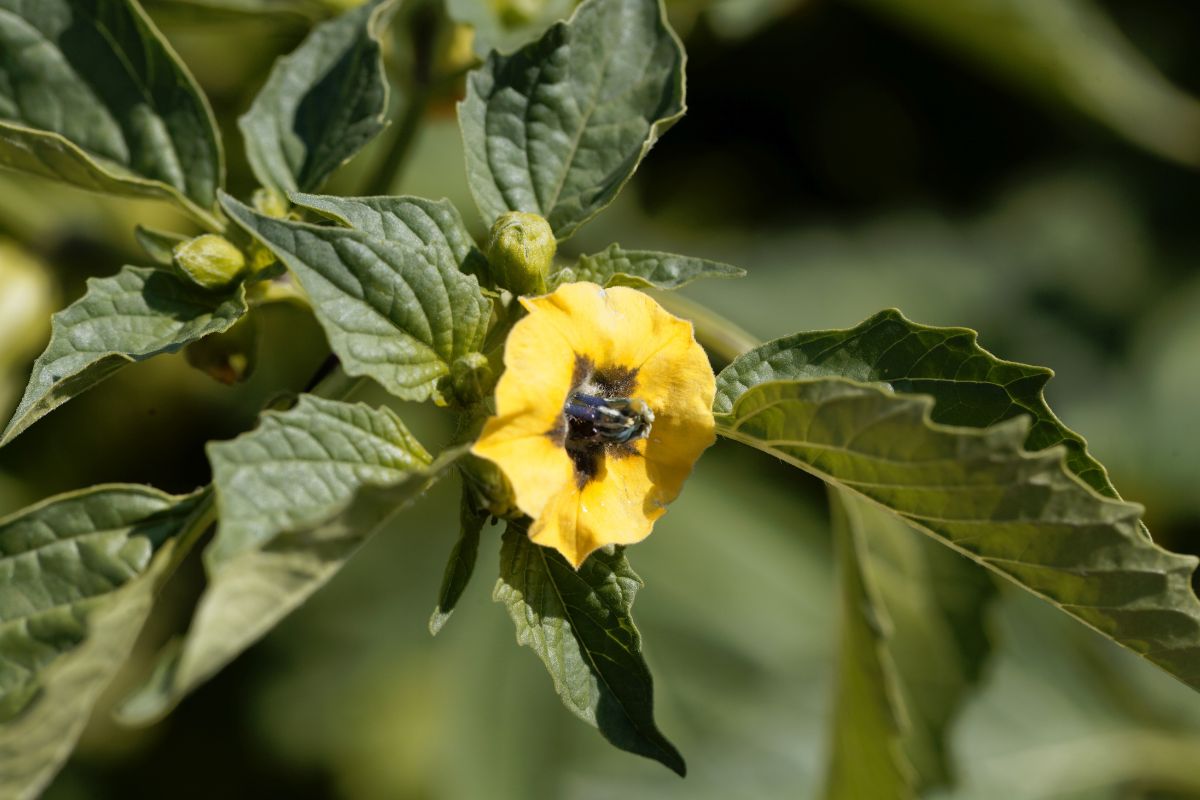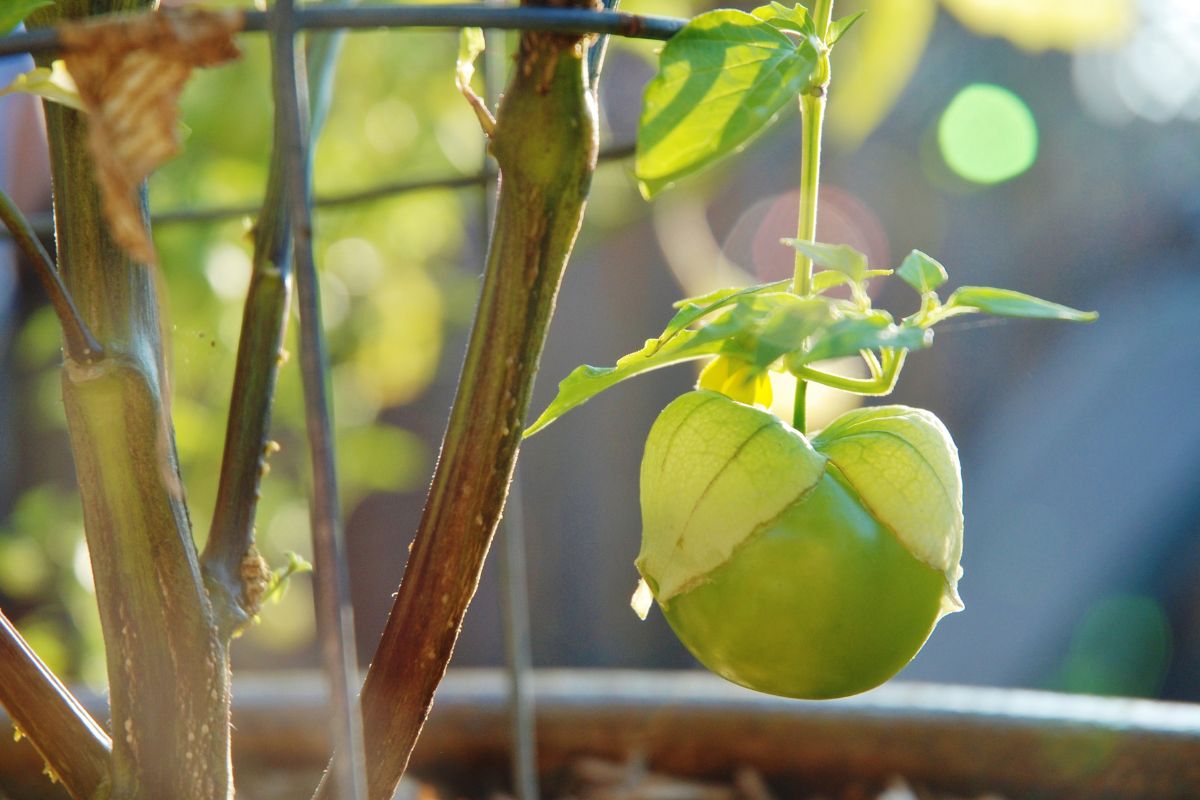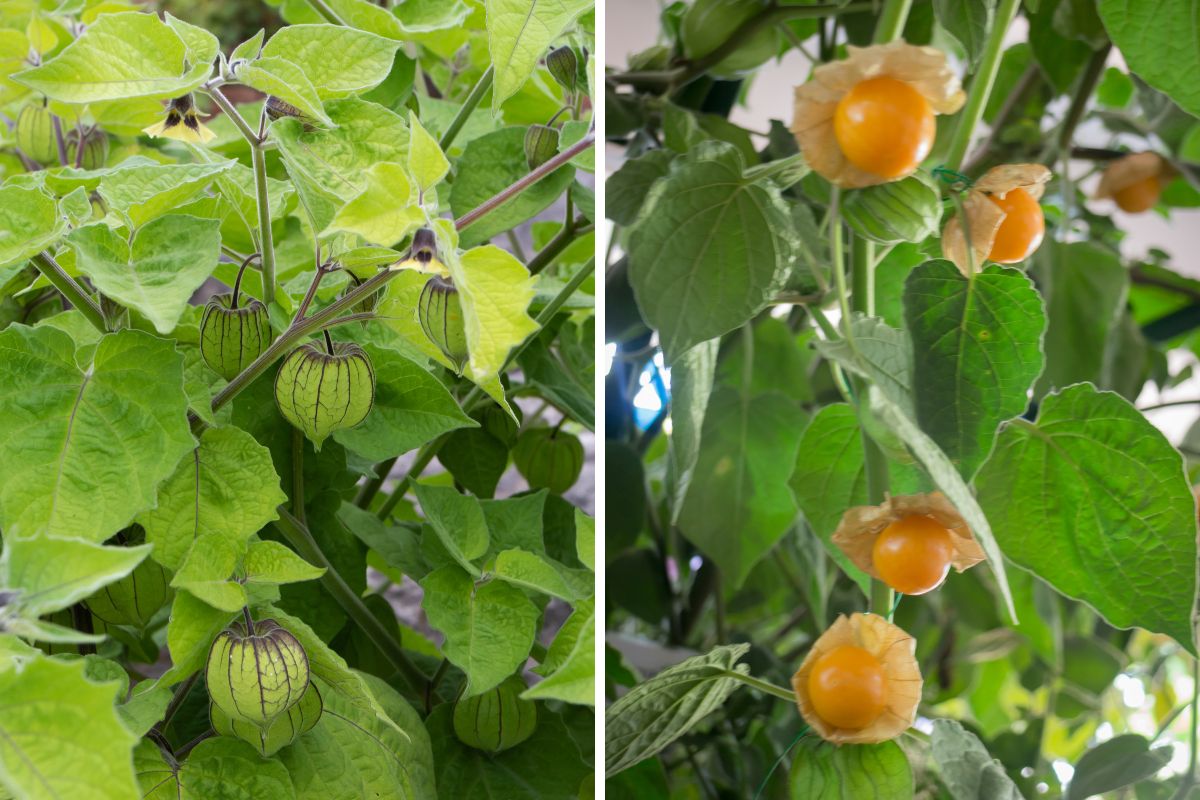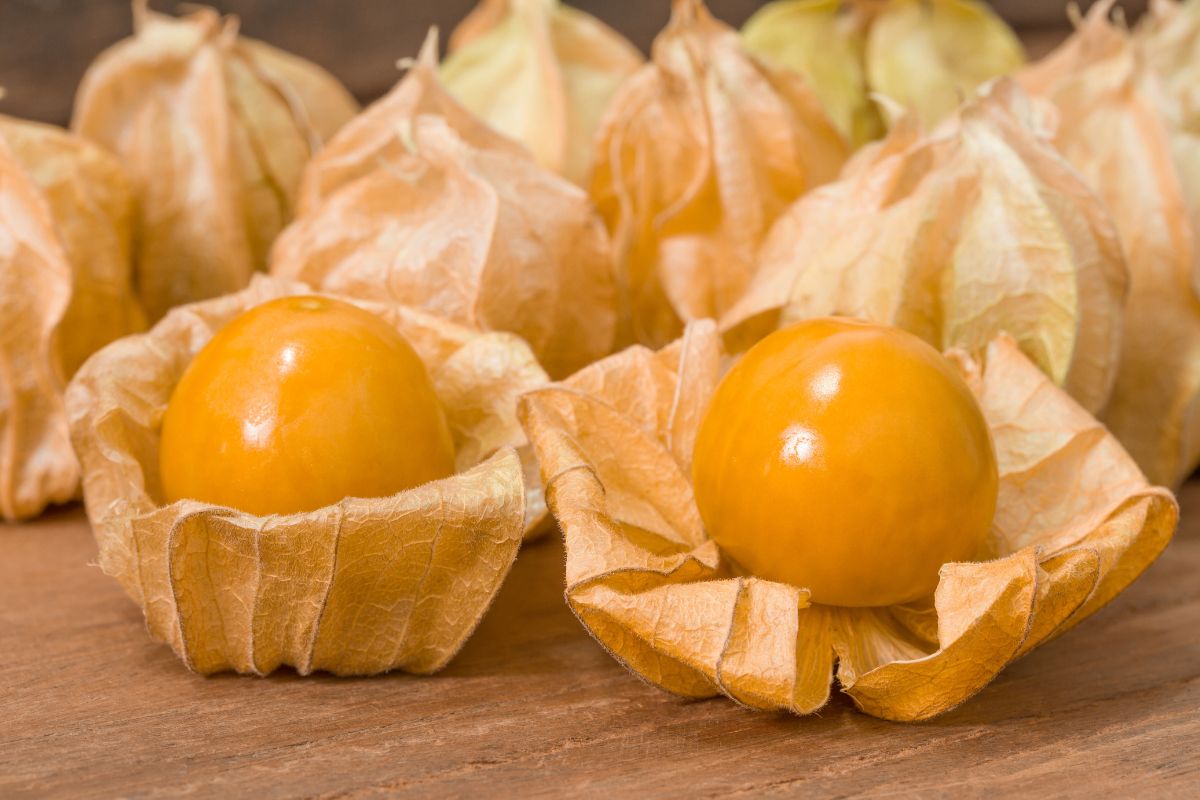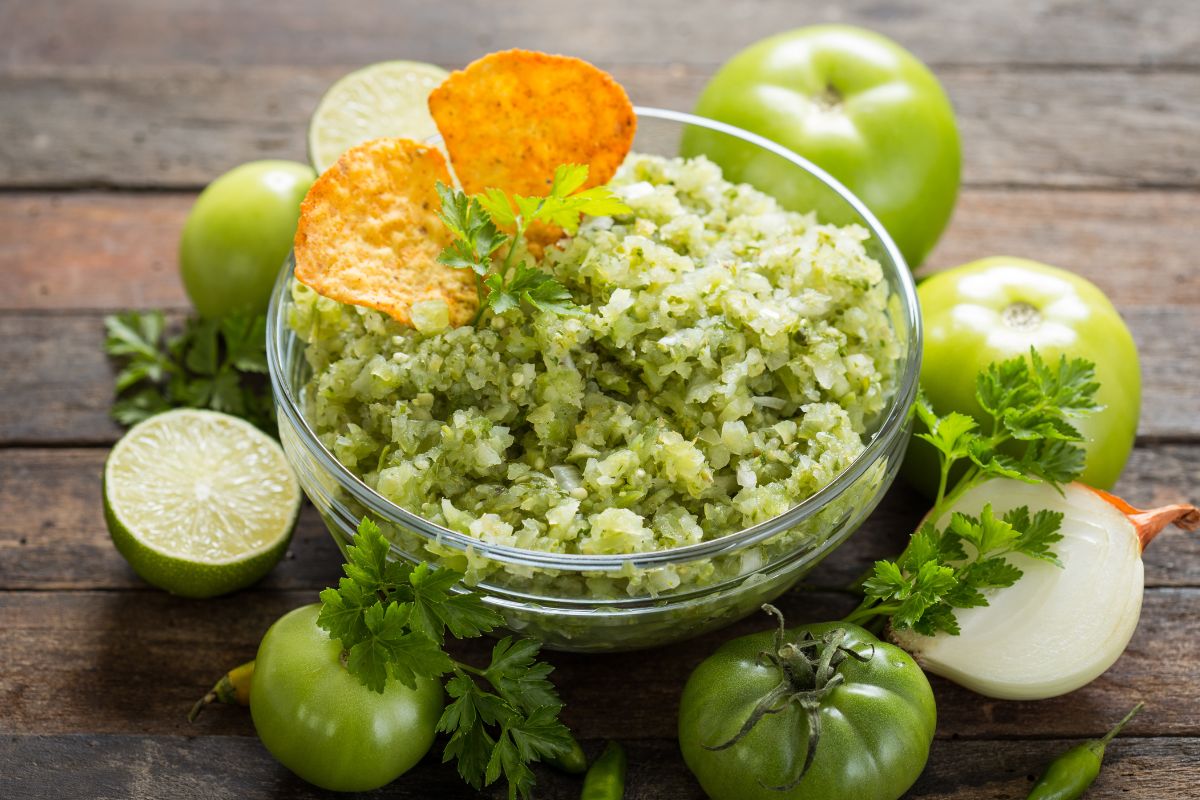If you want something a bit different for your kids’ school lunches, like growing unusual fruit, or live in a cool climate but hanker after tropical tasting produce, then consider adding a member of the Physalis genus to your garden plans.
Introducing the Physalis Genus
Physalis is a genus of around 80 species of annual or perennial fruiting plants native to North and South America. Part of the nightshade family, plants of this genus have five-petalled flowers, flat round seeds and simple, sometimes hairy green leaves. The fruit is a firm berry, similar to an unripe cherry tomato, and green, orange or yellow.
What sets physalis apart from other nightshades is the distinctive papery lanterns that encase the fruit. These are actually enlarged calyxes, the petal-like part at the base of flowers. In the case of physalis the calyxes grow to wrap the whole way around the fruit, forming a structure both protective and ornamental. The calyxes generally start green and dry to brown and then light beige, eventually splitting open to reveal the fruit inside.
From a productive point of view, the most commonly grown plants from the physalis genus are tomatillo, Cape gooseberry and Cossack pineapple.
Tomatillo
Tomatillo (pronounced ‘toh-mah-tee-yo’)‘ is perhaps the best known member of the Physalis genus, and is an essential ingredient in Mexican cuisine because of its use in tangy salsa verde sauce. Also known as Mexican husk tomato or tomate verde (green tomato), and translating from Spanish as ‘little tomato’, tomatillo is related to but different from tomato.
Tomatillo plants grow as sprawling bushes up to 1.2m in height, with leaves similar to eggplant. The flowers are bright yellow with a purple centre, and the husk-encased fruit looks like a small green tomato. Bushes are highly productive, with two or three bushes easily keeping a family in salsa verde and preserves.
When removed from their husks the fruit are usually golf-ball sized or a little larger, green or purple depending on the variety grown, and firm. The taste is described as vibrant and tangy, more acidic and less juicy than a green tomato. The purple varieties are a little less tart than the green.
Cape Gooseberry
Cape Gooseberry is also known as the Inca berry, Golden berry or Peruvian ground cherry, among others. The latter name, as well as its botanical name Physalis peruviana, hints at its origins in Peru in South America. The common name Cape Gooseberry stems from the Cape of Good Hope, the area in South Africa where it was grown by settlers in the early 1800s.
Cape Gooseberry grows in a bushy habit, sometimes needing staking or support, and can reach heights of anywhere from 60cm to almost 2m depending on the age of the plant and the pruning regimen. It produces heart-shaped green leaves covered in tiny hairs and distinctive small yellow flowers with a purple or black spot in the centre.
The immature fruits are encased in a green husk which yellows as the fruit matures and will eventually turn brown and translucent and drop to the ground. The husks can be picked from the plant once they have turned yellow, or harvested from the ground soon after they have fallen. Ripe fruit is yellow, gradually turning to a deep orange.
Cossack Pineapple
The Cossack pineapple, commonly called the ground cherry, husk tomato or golden berry and botanically Physalis pruinosa, is a much lower growing plant than the Cape gooseberry, reaching only 30cm to 60cm in height and with a spread of one to two metres. Because of their low, sprawling habit, Cossack pineapple can be grown as a groundcover. Plants also typically have rounder leaves with a more pronounced toothing along the edge when compared to Cape gooseberry.
The fruit tends to be smaller and sweeter, typically 1-3cm in diameter, and has been said to taste a little like a pineapple. It will drop to the ground when it is ripe and the papery case, which is less rounded and more angular than the Cape gooseberry’s, has turned straw-coloured. The fruit have a long shelf life when ripe and will store for weeks in the fruit bowl.
Sowing Physalis
Physalis seeds look almost identical to tomato seeds and should be treated in a similar way. Sow seeds in early spring under glass in punnets or small pots at a temperature of 15-18°C and a depth of 2-4mm. The young plants should be potted on as needed and will be ready to plant outside once any danger of frost has passed. In frost free areas, seed can also be sown in autumn to give plants a head start on the growing season.
Growing Physalis
Tomatillo, Cape gooseberry and Cossack pineapple all desire a warm position in full sun or partial shade in moderately fertile well-drained soil. The plants will survive as short-lived perennials in frost-free climates, but in areas with more severe winters they are best grown as annuals. In warm climates plants may produce their best fruit during winter and spring.
One of the keys to good fruiting is consistent watering; water frequently during dry weather and mulch around plants to keep water in the soil. Plants need little to no fertiliser but a layer of compost or aged manure can be applied when they are young or after they have been pruned to give plants some extra nutrition. You can also add some fertiliser high in potassium during flowering and fruit formation. Fertilising is more likely to be necessary for plants grown in pots.
If overwintering, plants will need protection if frosts are expected. Cover plants with fleece or mulch to protect roots. At the start of the growing season, plants can be pruned to restrict their size or to remove dead growth. You can also prune the tips of Cape gooseberries to encourage a more bushy plant and to restrict the size.
Physalis tend to be pest free as long as they are grown in the right conditions. Aphids, slugs and snails may attack fresh growth, and powdery mildew can be a problem. Plants will go into dormancy under drought conditions, while overwatering can cause root rot, which will result in collapsed growth and possibly the death of the plant.
Harvesting and Eating the Fruit
Harvest tomatillo when the papery husk begins to split. Cape gooseberry can be harvested from the plant when the papery casing has turned yellow or pale brown and the fruit has a slight give when squeezed gently. It can also be left to fall to the ground, a surer sign that the fruit is ripe. Fruits of Cossack pineapple are generally best when left to fall to the ground; just be sure to collect them before snails, slugs or other predators discover them.
Tomatillo will give a fresh flavour to salsas and salads, and can also be cooked and added to soups and sauces. The fruits of Cape gooseberry and Cossack pineapple have a surprising number of uses. They can be eaten raw as a snack or added to salads or cheese boards. They can be cooked in deserts, including being stewed with honey, or added to pies and tarts. Lastly, they can be preserved by drying and being eaten like raisins, or by freezing. They also have a high pectin content so are ideal for jams and jellies.
The papery husks and tropical tang of fruits of the Physalis genus make them worthwhile crops to add to any productive garden.
